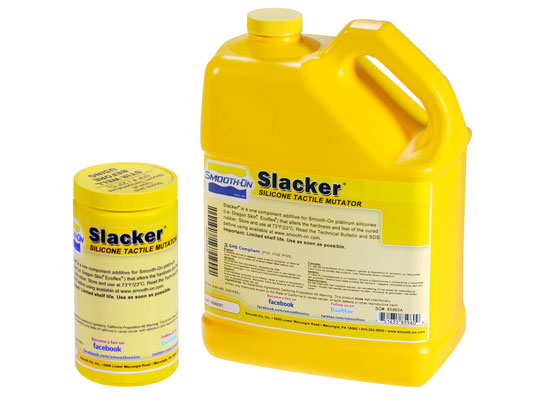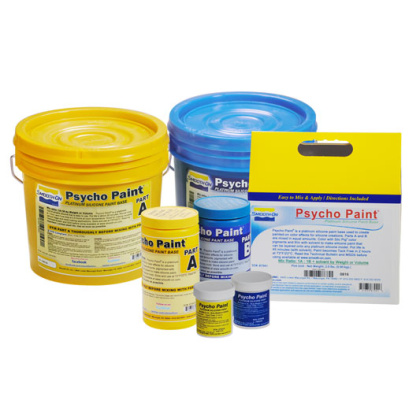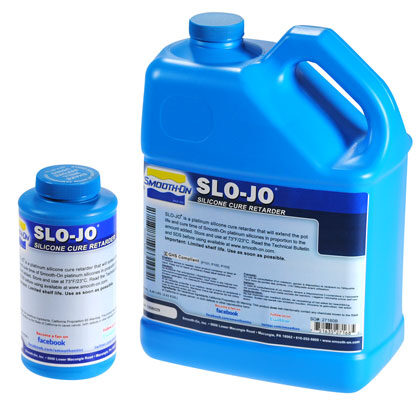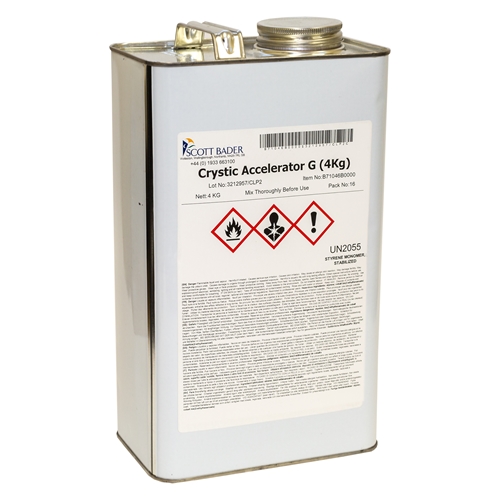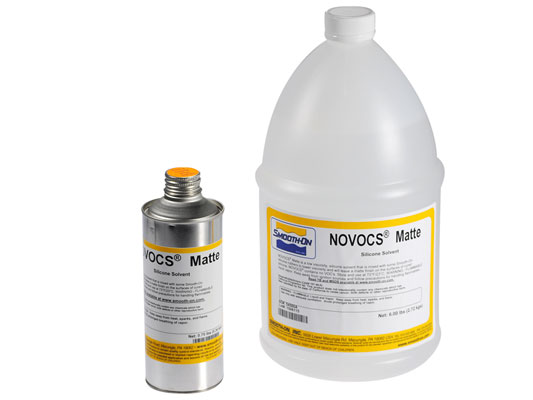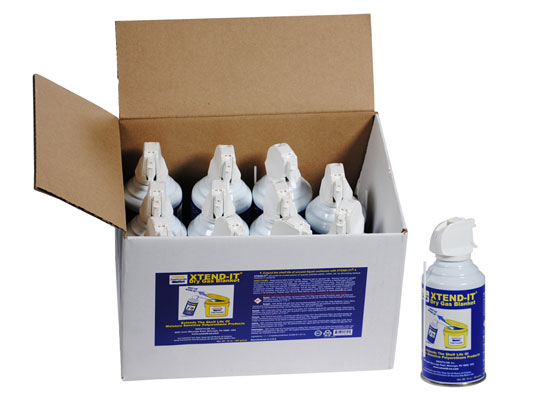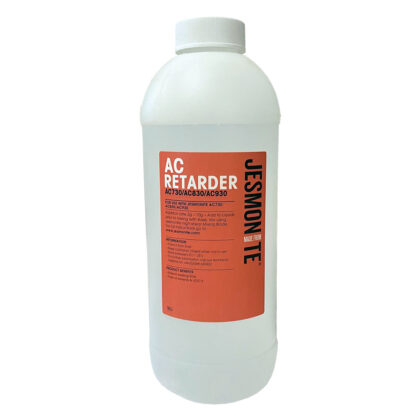Slacker™ is a one component translucent clear fluid that is added to our translucent platinum-cure silicones such as Dragon Skin™ and Ecoflex™ products. Slacker™ will change the “feel” of the silicone rubber to a softer and more “flesh-like” material. It also alters the rebound properties of the silicone, making it feel more like human tissue. Silc-Pig™ silicone color pigments can be added to match a specific skin tone.
Slacker™ allows the user to vary the degree of tackiness to the cured silicone, allowing for the creation of self-sticking silicone appliances. The amount of tackiness is in direct proportion to the amount of Slacker™ added. Pieces created with Slacker™ will not exude silicone oil, eliminating a common problem with other softening methods.
Slacker™ can be added in larger proportions to Smooth-On’s super soft and stretchy platinum silicones (for example, Dragon Skin™ FX-Pro™) to make silicone gel that can be used to create gel-filled silicone prosthetic appliances. Gel-filled appliances will flex, bend, and even wrinkle like human flesh. Silicone gels created with Slacker™ can also be used to create cushioning materials for medical applications (anaplastology). Use Skin Tite™ or Dermatac™ to temporarily, but securely, adhere silicone appliances to the skin.
Please note: Slacker™ should not be used with Ecoflex™ 00-10 or Ecoflex™ GEL.
Instructions
Instructions
Temperature – Store and use all products at room temperature (73°F / 23°C). This product has a limited shelf life and should be used as soon as possible. Wear safety glasses, long sleeves and vinyl gloves to minimize contamination risk.
MEASURING & MIXING…
Whether using an Ecoflex™ product or a Dragon Skin™ product, the proper mix ratio is 100 Parts A + 100 Part B + X Parts SLACKER™. Everyone’s application and desired level of stickiness or “tack” will vary. The following chart should be used as a reference for you to achieve your own desired effect.
USING SLACKER™ WITH DRAGON SKIN™ OR ECOFLEX™ PRODUCTS…
| Dragon Skin™ 10 & SLACKER™ – Add Up To 100% |
| Mix Ratio by Weight |
100A:100B:50S |
100A:100B:100S |
100A:100B:150S |
100A:100B:200S |
| Shore Hardness |
00-30 |
000-50 |
000-20 |
000-7 |
| Tack |
None |
Slight |
Slight to Very |
Very |
| Dragon Skin™ FX PRO & SLACKER™ – Add Up To 100% |
| Mix Ratio by Weight |
100A:100B:50S |
100A:100B:100S |
100A:100B:150S |
100A:100B:200S |
| Shore Hardness |
00-20 |
000-35 |
000-17 |
000-3 |
| Tack |
Slight |
Slight to Very |
Very |
Very |
| Dragon Skin™ 10NV & SLACKER™ – Add Up To 200% |
| Mix Ratio by Weight |
100A:100B:50S |
100A:100B:100S |
100A:100B:200S |
100A:100B:400S |
| Shore Hardness |
00-35 |
00-22 |
000-51 |
000-21 |
| Tack |
None |
Slight |
Slight to Very |
Very |
| Ecoflex™ 00-30 & SLACKER™ – Add Up To 50% |
| Mix Ratio by Weight |
100A:100B:50S |
100A:100B:100S |
100A:100B:150S |
100A:100B:200S |
| Shore Hardness |
000-40 |
000-20 |
Not Recommended |
Not Recommended |
| Tack |
Slight to Very |
Very |
Usage Example – 50 grams Dragon Skin™ FX-Pro™ part A + 50 grams Dragon Skin™ FX-Pro™ part B + 50 grams Slacker™ (1 part) will give you a 000-35 silicone with some tackiness.
Adding Color – Silc Pig ™ silicone pigments can be added and mixed thoroughly into the silicone rubber prior to adding Slacker™ for matching a specific skin tone, etc.
Mixing – Ecoflex™ or Dragon Skin™ silicones with Slacker™ added can be hand mixed. Aggressively hand mix for 3 minutes, making sure that you scrape the sides and bottom of your mixing container several times.
Release Agent – When using a platinum silicone mold, Ease Release™ 200 should be used. If there is any question about the effectiveness of a release agent combination, a small scale test should be made on an identical surface for trial.
Pouring – For best results, pour your mixture in a single spot at the lowest point of the mold. Let the rubber seek its level in the mold. A uniform flow will help minimize entrapped air.
SILICONE GEL FILLED MAKEUP APPLIANCES…
Using An Encapsulator – When creating a gel-filled appliance, use a platinum silicone as your membrane for best results. Dragon Skin™ FX-Pro™ works very well as a membrane for gel filled appliances.
Applying A Mold Release – Appliances appliances made with Slacker™ can be cast into platinum silicone molds, urethane resin molds (Shell Shock™) or rigid gypsum molds. Ease Release™ 200 can be used as a mold release. Another release option is to apply a soap solution (1 part unscented dish soap to 2 parts 99% isopropyl alcohol works well) with a clean brush over all mold surfaces. Allow release to dry for at least 30 minutes.
ADHERING APPLIANCE TO THE SKIN…
After the casting is fully cured, the mold release should be removed. Soap based release can be removed using warm water, Ease Release™ 200 can be removed using isopropyl alcohol. Use Smooth-On’s Skin Tite™ or Dermatac™ to adhere appliance to the skin per the Technical Bulletins for these products. adhere the piece to the skin. Theatrical makeup can be used to further blend and color the piece. We recommend that you do a small scale test on the back of your hand to ensure that you have no allergic reaction to silicone. If you notice any type of skin reaction, do not use product.
CURING & PERFORMANCE…
Curing – The cure time of the silicone will be take longer when Slacker™ is added. As platinum-cure silicones are heat sensitive, curing can be accelerated by applying heat. Do not cure rubber where temperature is less than 65°F /18°C.
Cure Inhibition – Platinum-cure silicone rubber may be inhibited by certain contaminants in or on the pattern to be molded (such as sulfur based clays, polyesters, certain wood surfaces, epoxies, urethane rubber and tin-cured silicone rubber) resulting in tackiness at the mold interface or a total lack of cure throughout the piece.
If compatibility between the rubber and the mold is a concern, a small-scale test is recommended. Apply a small amount of rubber onto a non-critical area of the mold. Inhibition has occurred if the rubber is uncured after the recommended cure time has passed.
Because no two applications are quite the same, a small test application to determine suitability for your project is recommended if performance of this material is in question.

